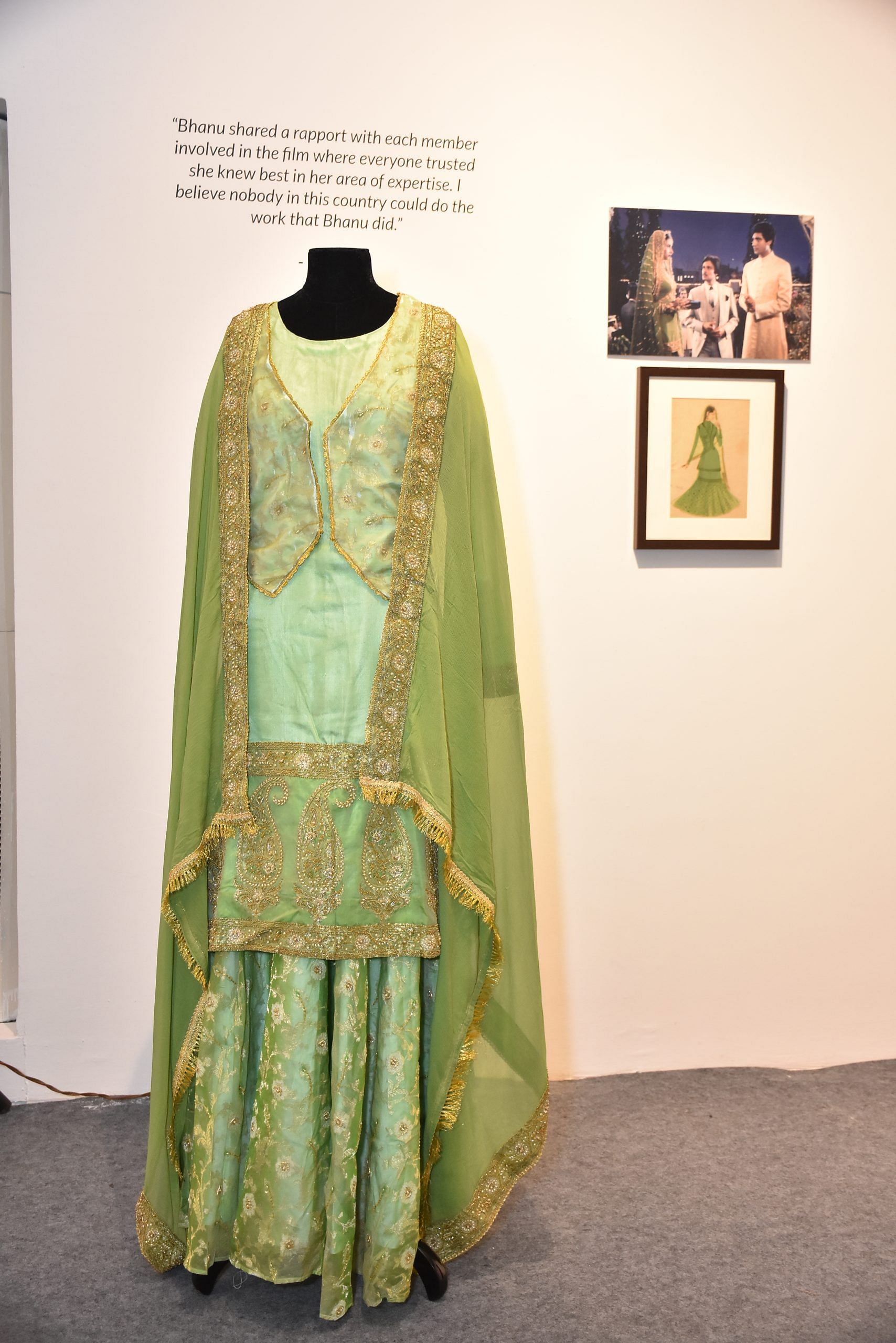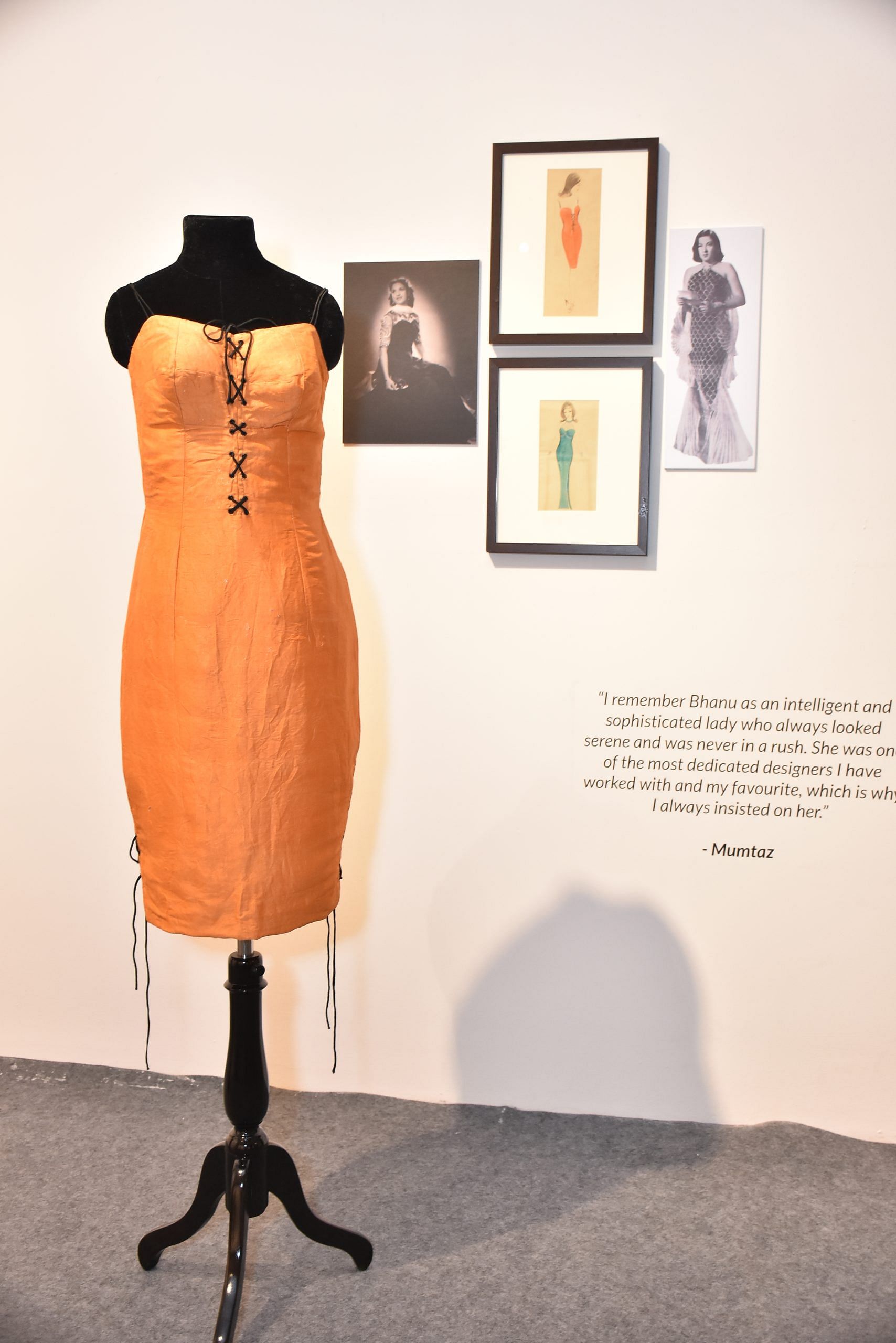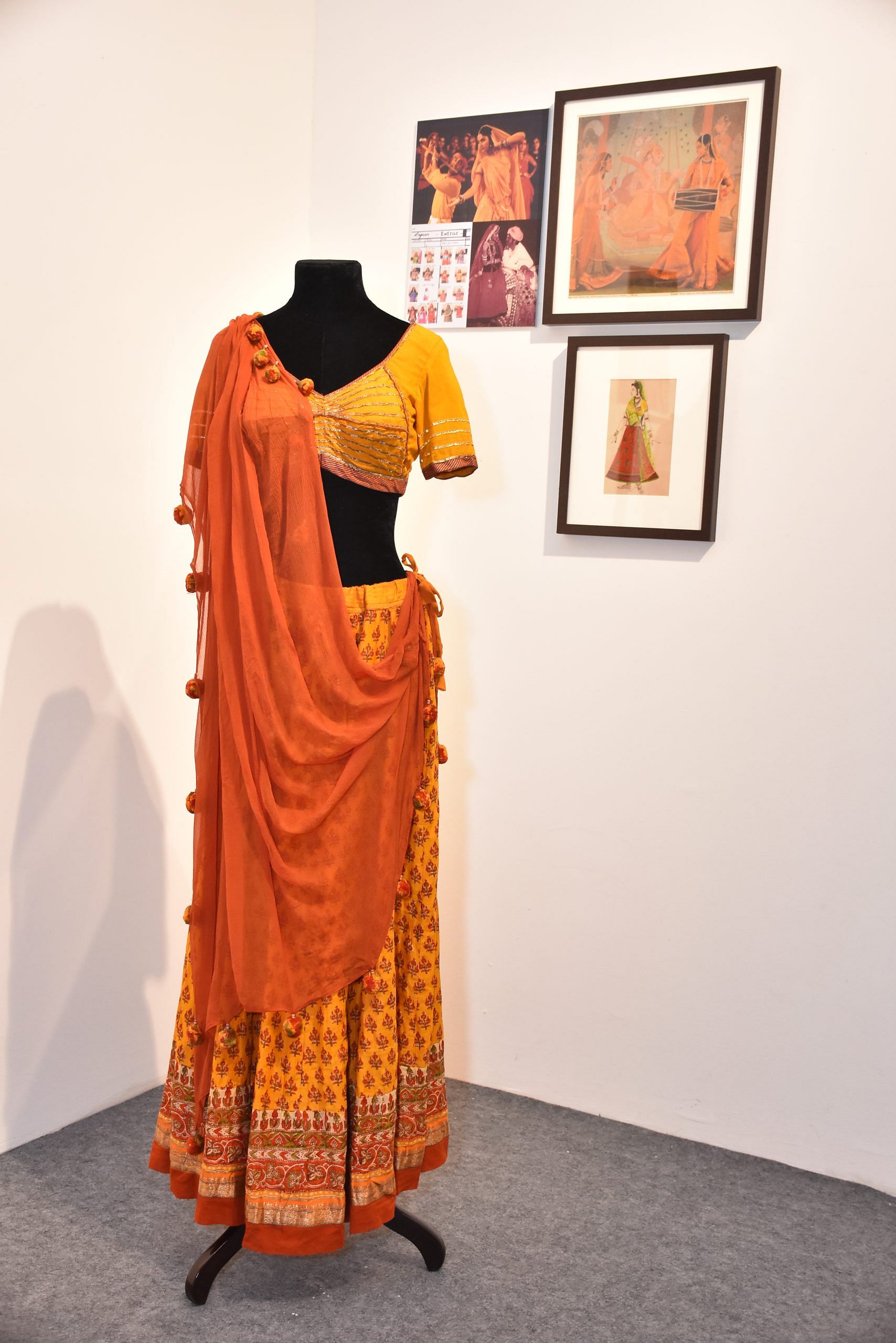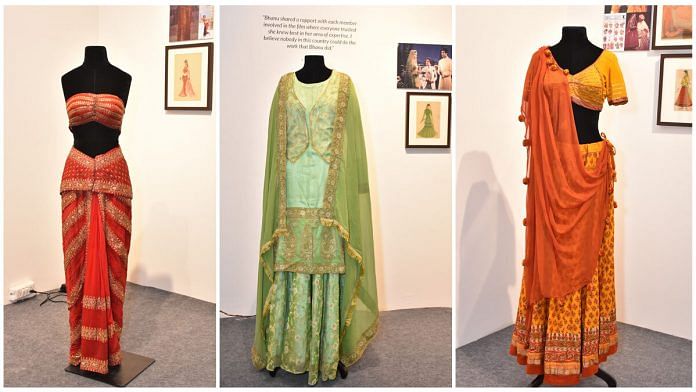What is common between the iconic orange-coloured, glittery ‘Amrapali saree’ worn by Vyjayanthimala for the 1966 movie and the starched, cotton sarees worn by Rohini Hattangadi as Kasturba Gandhi in Gandhi (1982)? It’s Bhanu Athaiya whose nimble hands envisaged, designed and made the sarees iconic. The work of India’s first Oscar winner, in costume design category, is on display at Bikaner House in New Delhi. At the exhibition titled The Legacy of Bhanu Athaiya, the Amrapali saree reminds visitors how it is both a work of art and an iconic moment in the fashion history of 1960s Bollywood.
On a surprisingly warm winter evening of 28 January, the who’s who of fashion, art and royalty made a beeline for a small exhibition space in Delhi’s Bikaner House. By 7 pm, there was no place to even stand, as a visitor whispered to another, “They clearly underestimated the popularity of Bhanu.” A flex board outside announced the exhibition showcasing the works of Bollywood’s first costume designer, who also seamlessly multitasked as the jewellery curator and hairdresser, as and when the need arose.
“Costumes, before Bhanu, had nothing to do with either the sets or the characters. They were just kind of passed on to people. Then here comes Bhanu, and we start getting something which is sensitive, which is researched,” said fashion designer and textile historian Ritu Kumar in a panel discussion at the inauguration of the event. The panel also included exhibition curator Brijeshwari Kumari Gohil; Kiran Nadar, founder and chairperson of Kiran Nadar Museum of art; Radhika Gupta, daughter of Bhanu Athaiya; and Radhikaraje Gaekwad, the Maharani of Baroda.

The exhibition that looks at the six decades of Athaiya’s works in art and cinema offers an insight into the designer’s range spanning from the green bridal lehenga worn by Salma Agha in Nikaah (1982) to the metallic costume designed for an Onida advertisement. “I tried to divide the costumes that are most impactful in terms of Indian cinema and setting tone for Indian fashion at the time, and that also had historical meaning in how she built the Indian culture and heritage,” says Gohil.
Also read: Yash Chopra’s Waqt was the dazzling Kabhi Khushi Kabhie Gham of its time
Magic of silhouettes and glamour
Bhanu Athaiya, born Bhanumati Annasaheb Rajopadhye, worked with Raj Kapoor, Guru Dutt, BR Chopra, Yash Chopra, Vijay Anand and Raj Khosla to Ashutosh Gowariker, Jabbar Patel and Vidhu Vinod Chopra. If for Amrapali, Athaiya’s researched wall paintings at the Ajanta caves in Aurangabad, for Reshma Aur Shera (1971), she travelled all the way to attend a village wedding in Pochina in Rajasthan to understand how women drape their dupattas.
The aim of the exhibition with nearly 50 exhibits is to bring forth Bhanu’s body of work, that ranged from illustrations for her job at a women’s magazine to her paintings, honed at the J.J School of Art, to costume designs for movies as well as advertisements. Text testimonials of actors from Mumtaz to Rekha are also part of the exhibition.

Bhanu was the only female artist who became a part of the Bombay Progressive Artists’ Group (PAG). “Her modernist vision stemmed from this ability of hers to sketch and paint and then extended into her costumes,” said Kiran Nadar. In fact, visitors were enquiring with hope if any of the pieces on exhibit were for sale.
The Oscar legacy
Bhanu winning an Academy Award, India’s first, is also documented at the exhibition through the costumes of the film Gandhi, placed before the giant screen that shows a clip of Bhanu walking up the stairs to collect her Oscar. “Nehru jackets became popular in the US after the release of the film, the ones that were designed by Bhanu for the film,” adds Gohil.
The austere range of Gandhi, which spans over 50 years of the leader’s life, became the backbone that made the film an authentic, historically accurate representation of the times. The film was also in stark contrast to the glamorous outfits Bhanu usually created, but she took the challenge head on and aced it.
“In today’s age, a film like Gandhi would need tons of people working on just the costumes. In the ’80s, there was just Bhanu. From jewellery to hair, her sense of design and art allowed her to inculcate all aspects of an actor’s physical persona,” said Nadar.

Eighteen years after winning the Oscar for Gandhi, Athaiya was part of another film that became India’s only third film to be shortlisted in the best foreign film category — Lagaan (2001). The canvas was bigger–from cricket costumes, British military uniforms, jackets for the ball, to the women’s graceful evening gowns, and villagers’ costumes.
One of the lehengas worn by the film’s leading actor Gracy Singh while dancing to the song Radha Kaise Na Jale is also on display at the exhibition. And for a moment, you are transported to the world of Lagaan, as you stand in front of the costume, in the carefully lit exhibition hall. Such is the impact of Bhanu’ legacy, and the collection on display.



